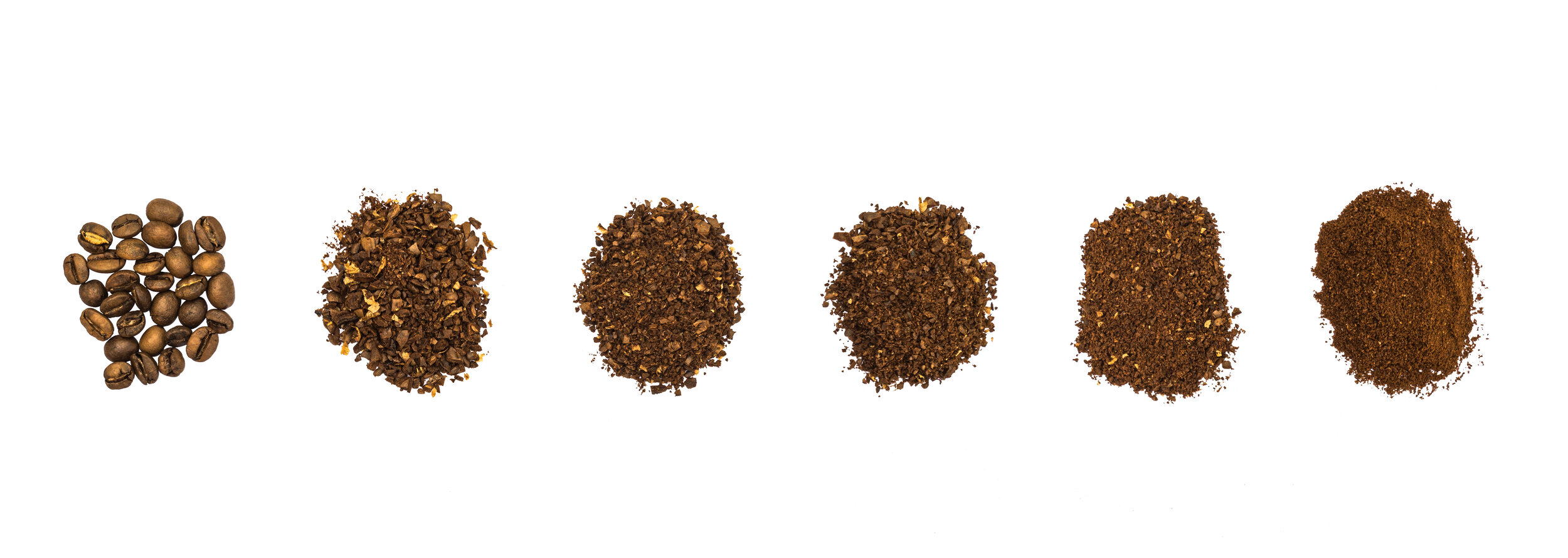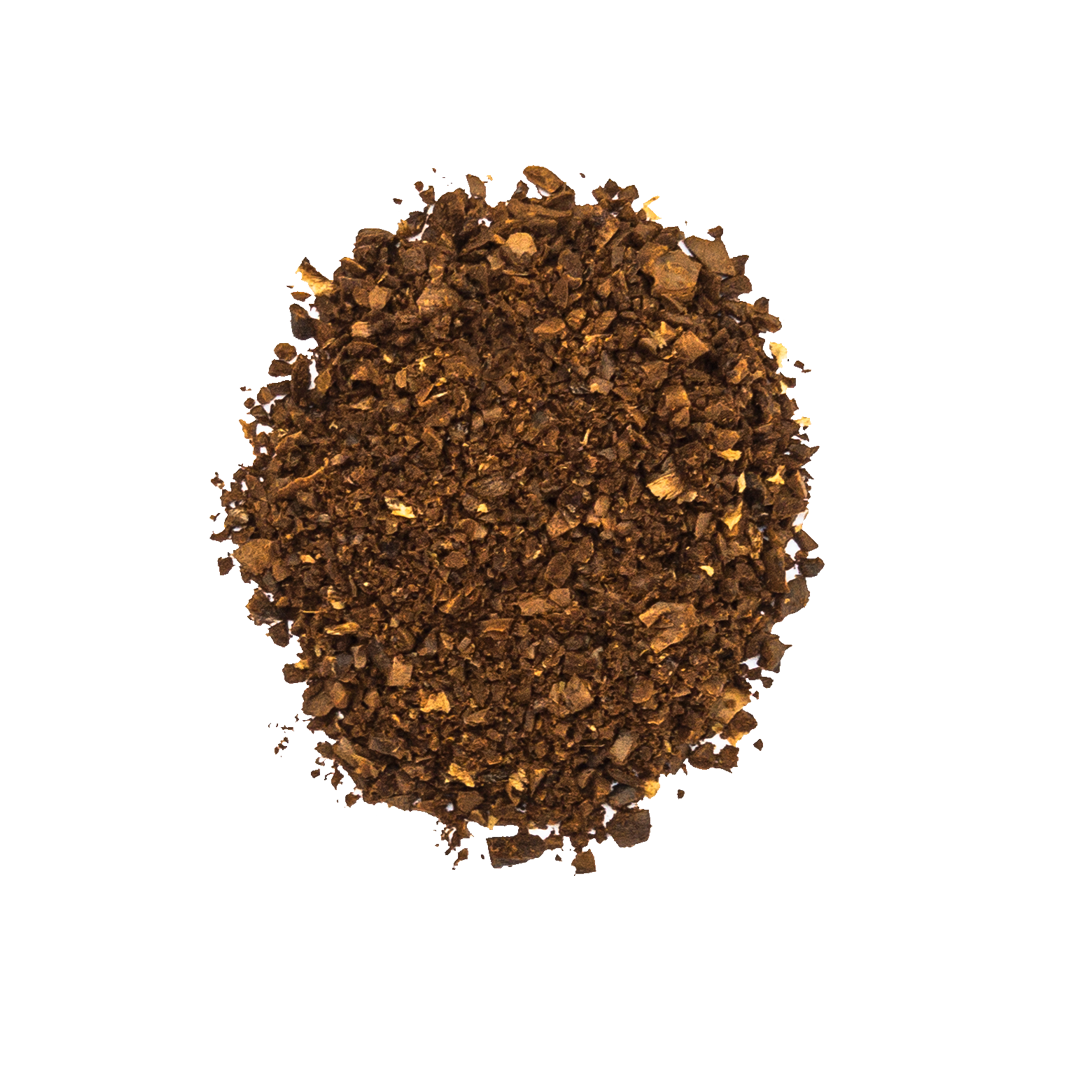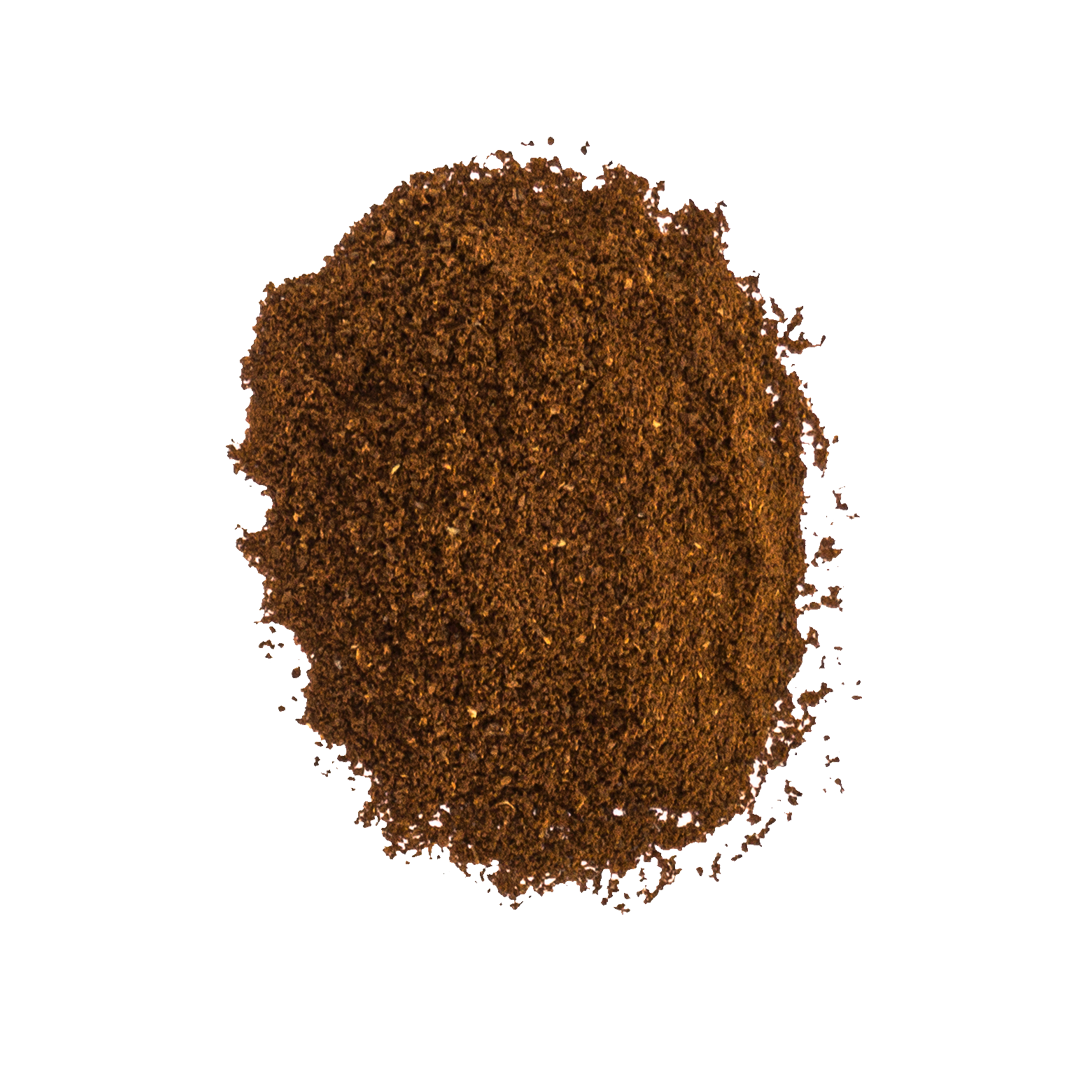Coffee Grind Size: Explained
Grind size makes a huge impact on flavor when brewing coffee. If the grind size is too fine it can produce an over-extracted cup of coffee that can leave a bitter taste in your mouth. On the other hand, if the grind size is too coarse your coffee will be under-extracted and will have a sour or salty cup of coffee that lacks sweetness. In order to have an even extraction & to make a beautiful cup of coffee, it’s important to understand how grind size affects the end result of your coffee.
Grinding is the act of fracturing coffee beans into smaller particles that help encourage the extraction of coffee by increasing exposed surface area for coffee brewing.
Fundamentals of Grinding Coffee
Understanding how to grind your coffee is one of the fundamentals for coffee brewing. If your grind size is too fine or coarse, it can result in bitter, sharp, or grassy flavors when extracted.
A finer grind size will produce smaller particles that have a higher surface area, causing your coffee grind particles to extract quicker. This means that with a finer grind, you need less time in contact with water than a coarser grind when brewing coffee.
How to Choose the right grind Size for your coffee
Each brewing method requires a different grind size and can be paired with a particle size range. For instance, Cold Brew and French Press are the two methods where you want a coarser grind size, whereas Espresso is at the other end of the spectrum with much smaller grind size.
Extra Coarse — Cold Brew Coffee
Extra Coarse coffee grind sizes is used for brewing methods like Cold brew & French Press. For Cold Brew Coffee, you will want to use an extra coarse to coarse grind size. The particle size for cold brew coffee should resemble flakey kosher salt.
Coarse — French Press & Drip
A coarse grind is going to be used for French Press coffee all the way to your standard drip/ coffee maker. For general reference, a coarse grind should resemble sea salt/table salt.
Medium — Drip, Chemex & Stovetop Espresso
This size grind is where most homebrewers will stay until they get more brewing devices. This grind size should be in-between table salt and sand. This size grind is used for drip coffee, Chemex, and some stovetop espresso machines.
Medium-fine — Pour overs & Aeropress
For single-cup pour-overs with more body and for the Aeropress fanatics, you are looking to use a medium-fine grind size.
Fine — Espresso & Moka Pot
This particle size range is used mainly for espresso & the Moka pot. With a finer particle size, espresso typically has the least contact with water during the extraction process.
From Coarse to Fine
Particle Size Distribution
The coffee grind chart above is a visual representation of the particle size distribution of coffee grounds.
What is Particle Size Distribution?
Particle Size Distribution is the range of particle sizes produced after grinding. If your coffee grinds have a wide range of particle size distribution, you will see a combination of Fines & Boulders. These Fines & Boulders can make a pretty big difference in how your cup of coffee can taste. Therefore, we want to narrow the particle size distribution range to have a more equal extraction.
Fines are tiny “fine” particles that lead to over-extraction and a bitter flavor.
Boulders are larger, pebble-sized particles that have less surface area than fines which can result in under extraction.
Do I Have a wide Particle Size Distribution?
There are a couple of things that can help narrow the range of particle sizes, however the most important is what type of grinder you use & how sharp your burrs are.
If you are new to brewing coffee, you probably have been using a blade grinder instead of a burr grinder. We will talk about this more in a future post, but just know that a blade grinder produces a very wide particle size distribution range and we would recommend investing in a good burr grinder for your coffee.
Dull vs. Sharp Grinder Burrs
Dull vs. Sharp Burrs
To put it simply, Dull Burrs lead to under/over-extraction and sharp burrs lead to equal extraction.
Dull blades = Wider Particle Size Distribution = Under/Over Extraction
Sharp Blades = Narrower Particle Size Distribution = Equal Extraction
Once you notice that you have dull blades, it’s time to replace them.
How do I know when to change the burrs on my grinder?
The burr edges feel dull
You have to keep grinding finer to compensate for particle size inconsistency
The grounds are more & more inconsistent as you grind more coffee
The coffee grounds are coming out & clumping together
In Conclusion
Grind size is super important to get an even extraction and a better-tasting cup of coffee. Be mindful when brewing your next cup of coffee to look at your ground up coffee to see if you can spot wide particle distribution when grinding.










